Did you know that lima beans, also known as Phaseolus lunatus, can reach an impressive height of 8 to 12 feet when properly cared for? These heat-loving vegetables not only offer a delicious buttery taste but also have the potential to grow to remarkable heights. To ensure your lima bean plants reach their full potential, it’s crucial to provide them with the right care and attention.
In this article, I will share valuable tips for growing lima beans and promoting their optimal growth. From planting to harvesting, you’ll discover the essential steps and techniques to foster thriving lima bean plants. Whether you’re a seasoned gardener or new to growing lima beans, these tips will help you achieve a bountiful harvest of nutritious and flavorful beans.
Key Takeaways:
- Proper care is essential for successful lima bean plant growth.
- Lima beans can reach an impressive height of 8 to 12 feet with proper care.
- Follow the tips in this article to ensure thriving lima bean plants and bountiful harvests.
- From planting to harvesting, each stage requires specific care and attention.
- Providing the right growing conditions, watering, fertilizing, and pest control are key factors in caring for lima beans.
What are Lima Beans?
Lima beans, scientifically known as Phaseolus lunatus, are heat-loving vegetables that produce buttery seeds. These nutritious legumes offer a variety of health benefits and can be a delicious addition to various dishes.
There are different types of lima beans, each with unique characteristics and growth habits. Let’s take a closer look at some popular lima bean varieties:
Bush Beans
Bush beans are compact plants that don’t require additional support for their growth. They typically have a bushy habit and produce a concentrated harvest of beans. Bush varieties are ideal for small gardens or containers.
Vining Beans
Vining beans, also known as pole beans, are climbing plants that need support structures, such as trellises or stakes, to grow upright. These varieties tend to produce a higher yield compared to bush beans but require more space.
Speckled Beans
Speckled lima beans, as the name suggests, have distinct speckles on their seeds. They come in various shades, including white, cream, and red, and often have a slightly nutty flavor.
Large-Seeded Beans
Large-seeded lima beans have bigger seeds compared to other varieties. They are often favored for their rich, creamy texture and are commonly used in soups, stews, and casseroles.
These are just a few examples of the diverse lima bean varieties available. Each type offers a unique taste and texture, allowing you to experiment with different flavors in your culinary creations.
Next, let’s explore when and how to plant lima beans for successful growth and a bountiful harvest.
When and How to Plant Lima Beans
Planting lima beans requires careful timing and proper techniques to ensure successful growth. By following the right steps, you can enjoy a bountiful harvest of these delicious legumes. Here are some essential tips for planting lima beans:
1. Timing
The best time to plant lima beans is in the spring, after the last frost and when the soil temperature has warmed up to around 65°F (18°C). Lima beans thrive in warm weather, so wait until the soil is no longer cold to give them the ideal growing conditions.
2. Direct Sowing
Lima beans can be directly sown into the garden once the soil is warm enough. Choose a sunny spot with well-draining soil, as lima beans prefer full sun and require good drainage for optimal growth. Prepare the soil by removing any weeds or debris and loosening it with a garden fork or tiller.
Plant the seeds about 1-2 inches deep and space them 3-4 inches apart in rows that are 18-24 inches apart. Water the seeds gently after planting to ensure good soil contact and moisture absorption.
3. Indoor Start
If you live in an area with a shorter growing season or want to get a head start on your lima beans, you can start them indoors. Sow the seeds in biodegradable pots filled with seed starting mix about 4-6 weeks before the last expected frost date.
Keep the pots in a warm, well-lit area, such as a sunny windowsill or under grow lights. Once the seedlings have developed a few sets of true leaves and the weather has warmed up, you can transplant them into the garden. Be sure to harden off the seedlings by gradually exposing them to outdoor conditions before transplanting.
4. Support and Mulch
Depending on the variety, lima beans can either be bushy or vining. Vining varieties require support, such as trellises or stakes, to help them climb and prevent the pods from dragging on the ground. Be sure to provide the necessary support early on to avoid damaging the plants later.
Additionally, mulching around the base of the plants can help conserve moisture, suppress weeds, and maintain more consistent soil temperatures. Organic mulch, such as straw or shredded leaves, works well for lima beans.
| Planting Method | Pros | Cons |
|---|---|---|
| Direct Sowing | – Simple and straightforward | – Risk of seeds being eaten by birds or pests |
| Indoor Start | – Allows for an earlier start | – Requires additional time and effort |
Note: Choose the planting method that suits your gardening preferences and local climate.
By following these planting tips, you can set your lima beans up for success from the beginning. Remember to check the specific recommendations for the variety you are growing, as different types of lima beans may have slightly different planting requirements.
Growing Conditions for Lima Beans
Ideally, lima beans thrive in specific growing conditions that provide them with the necessary sunlight and soil conditions to flourish. By meeting these requirements, you can ensure healthy growth and abundant yields of these delicious legumes.
Sun Exposure
Lima beans are sun-loving plants that thrive when exposed to full sun. It’s best to provide them with 6 to 8 hours of direct sunlight every day. This allows the plants to photosynthesize and produce ample energy for growth and pod formation. Placing them in a spot with sufficient sunlight will promote robust vegetation and encourage a higher yield of lima beans.
Ideal Soil Composition
The soil for lima beans should be well-draining and fertile. A loamy soil texture is ideal since it retains enough moisture for the plants, while also facilitating proper drainage to prevent waterlogged conditions. Lima beans prefer a slightly acidic to neutral pH range of 6.0 to 6.8. This ensures optimal nutrient availability for the plants and supports healthy root development.
Soil Preparation
Prior to planting lima beans, it’s crucial to prepare the soil properly. Start by removing any weeds or grass from the planting area, as they can compete with the lima beans for nutrients and water. Mix in organic matter, such as compost or well-rotted manure, to improve soil fertility and structure. This will provide the plants with the necessary nutrients and ensure that the roots can penetrate the soil easily.
Here are the key growing conditions for lima beans at a glance:
| Growing Condition | Ideal Requirement |
|---|---|
| Sun Exposure | 6 to 8 hours of direct sunlight daily |
| Soil Type | Well-draining, loamy soil |
| Soil pH | 6.0 to 6.8 (slightly acidic to neutral) |
With the right growing conditions, lima beans can thrive and produce an abundant harvest. Taking the time to meet their sun exposure and soil requirements will set the stage for successful lima bean cultivation.
Watering and Fertilizing Lima Beans
Proper watering and fertilization are crucial for the healthy growth and development of lima beans. Here are some essential tips to ensure your lima bean plants receive the necessary moisture and nutrients for optimal nutrition:
Watering Guidelines
Lima beans require consistent moisture throughout their growth cycle. The soil should remain evenly moist, but not waterlogged, to prevent root rot. Follow these watering guidelines to maintain appropriate moisture levels:
- Deep watering: Water the plants deeply once a week, ensuring the moisture penetrates the root zone.
- Flowering and fruiting stages: Pay special attention to watering during these stages as the plants require more moisture for flower formation and pod development.
- Monitor soil moisture: Regularly check the soil moisture levels by inserting your finger about an inch deep into the soil. If it feels dry, it’s time to water.
Remember, providing consistent moisture is key to preventing stress and promoting healthy lima bean growth.
Fertilization and Nutrient Needs
Lima beans benefit from regular fertilization to ensure they receive essential nutrients for robust growth. Consider the following tips for fertilizing lima beans:
- Mid-season organic fertilizer: Apply an organic vegetable fertilizer mid-season to provide a nutrient boost. Look for a fertilizer specifically formulated for vegetables and follow the package instructions for application rates.
- Avoid over-fertilization: While it is important to provide adequate nutrients, avoid over-fertilizing, as excessive nitrogen can lead to excessive foliage growth at the expense of pod development.
- Organic alternatives: If you prefer organic fertilizers, consider using compost or well-decomposed manure to enrich the soil and provide natural, slow-release nutrients.
By providing proper watering and fertilization, you can ensure that your lima bean plants receive the necessary nutrition to thrive and produce a bountiful harvest.
| Nutrient | Function | Sources |
|---|---|---|
| Nitrogen (N) | Stimulates leaf and stem growth | Natural sources: compost, manure. |
| Phosphorus (P) | Promotes flowering and fruiting | Natural sources: bone meal, rock phosphate. |
| Potassium (K) | Aids in pod development and overall plant health | Natural sources: wood ash, kelp meal. |
Managing Pests and Diseases of Lima Beans
When growing lima beans, it’s important to be aware of the common pests and diseases that can threaten the health of your plants. By monitoring your garden regularly and implementing appropriate pest and disease control methods, you can protect your lima bean plants and ensure a successful harvest.
Pests Affecting Lima Beans
Lima bean plant pests can cause significant damage if not addressed promptly. Here are some common pests that can target your lima bean plants:
- Aphids: These small, soft-bodied insects feed on the sap of the plant, leading to stunted growth and distorted leaves.
- Bean Beetles: These beetles eat the foliage, flowers, and immature pods of the lima bean plants, potentially causing severe damage.
- Spider Mites: These tiny pests suck the plant sap, resulting in yellowing leaves and webbing on the plants.
Regularly inspect your lima bean plants for these pests. If you notice any signs of infestation, take immediate action to prevent further damage. Consider using organic pest control methods such as insecticidal soap or neem oil, which are effective against many common pests.
Diseases Affecting Lima Beans
Several diseases can impact the health and productivity of your lima bean plants. It’s essential to be familiar with these diseases and take preventive measures to minimize their occurrence. Some common lima bean plant diseases include:
- Bacterial Blight: This bacterial disease causes wilting, yellowing, and browning of the foliage, leading to reduced plant vigor and yield.
- Mosaic Virus: This viral disease results in mottled or distorted leaves, stunted growth, and reduced bean production.
- Anthracnose: This fungal disease causes dark, sunken lesions on the leaves, pods, and stems of lima bean plants, potentially leading to plant death.
Implementing preventive measures such as crop rotation, proper sanitation, and providing adequate air circulation can help reduce the risk of disease. If necessary, apply appropriate fungicides or bactericides to control the spread of diseases.
Remember, early detection and timely action are crucial in managing both pests and diseases to protect your lima bean plants and promote optimal growth.
“Regular monitoring and appropriate pest and disease control methods are essential to protect your lima bean plants.”
Harvesting Lima Beans
Harvesting lima beans is an exciting step in the journey of growing these delicious vegetables. Whether you plan to enjoy them as summer shell beans or dry them for later use, knowing when and how to harvest your lima beans is crucial for optimal flavor and quality.
To determine the right time for harvesting lima beans, closely observe the pods. They should be plump and firm, indicating that the beans inside have reached maturity. Harvesting lima beans too early may result in underdeveloped seeds, whereas waiting too long can lead to tough and inedible beans.
Most lima bean varieties take about 60 to 90 days from planting to reach the harvest stage. However, it’s always best to refer to the specific instructions on your seed packet or consult with local gardening experts if you’re unsure about the maturity timeline for your chosen variety.
When it comes to the actual process of harvesting lima beans, it’s recommended to use both hands to gently pick the pods. This helps prevent damage to the plant and ensures that the remaining pods continue to grow and mature.
Pro tip: If you’re harvesting large quantities of lima beans, consider using a pair of scissors or garden shears to snip the pods from the plant. This can make the process quicker and more efficient, especially if you have multiple plants to harvest.
Once you’ve harvested your lima beans, there are various ways to enjoy them. If you’re opting for summer shell beans, simply open the pods and remove the seeds. These can be cooked and incorporated into soups, stews, salads, or side dishes.
If you’re planning to store your lima beans for later use, allow the pods to dry completely on the plant. Once dry, the pods will turn brittle and brown. Gently remove the seeds from the pods and store them in a cool, dry place in an airtight container.
| Harvesting Method | Pros | Cons |
|---|---|---|
| Handpicking | – Gentle on the plant – Allows for selective harvesting |
– Time-consuming for large quantities – Risk of damaging pods or plants |
| Using scissors or shears | – Quicker and more efficient for large quantities – Reduces plant damage |
– Requires additional tools – Risk of accidentally cutting other plant parts |
By harvesting your lima beans at the right time and using the appropriate method, you can enjoy the bountiful rewards of your gardening efforts. Whether you savor them fresh or store them for later, homegrown lima beans are a true delight.
Storing and Using Lima Beans
When it comes to storing lima beans, there are a few key guidelines to keep in mind. Whether you have fresh or dried beans, proper storage will help maintain their flavor and quality for future use. Let’s explore the best methods for storing and using lima beans.
Storing Fresh Lima Beans
If you have fresh lima beans, one option is to blanch and freeze them. Blanching involves briefly boiling the beans, then immersing them in an ice bath to stop the cooking process. This method helps preserve the vibrant color and texture of the beans. Once blanched, you can pack the beans into airtight freezer bags or containers and store them in the freezer for up to three months. Freezing fresh lima beans allows you to enjoy the taste of summer all year round.
Alternatively, if you plan to use fresh lima beans within a few days, you can store them unwashed in the refrigerator. Keep them in a breathable container, such as a perforated plastic bag or a vegetable drawer, to maintain freshness and prevent moisture buildup.
Storing Dried Lima Beans
If you have dried lima beans, proper storage is essential to maintain their quality and longevity. Place the dried beans in an airtight container, such as a glass jar or a plastic food storage container with a tight-fitting lid. Store the container in a cool, dry place away from direct sunlight, moisture, and heat. A pantry or cupboard is an ideal location.
Remember to check the stored dried beans periodically for any signs of pests or mold. If you notice any issues, discard the affected beans and ensure the remaining ones are properly sealed.
Using Lima Beans
Now that you have your stored lima beans ready, it’s time to explore the delicious possibilities. Lima beans can be used in a variety of dishes, from comforting soups and stews to hearty salads and side dishes. They can also be mashed or pureed to create creamy spreads and dips.
Here are a few recipe ideas to inspire your culinary adventures with lima beans:
- Classic succotash with lima beans, corn, and bell peppers
- Lima bean and bacon soup for a comforting meal
- Lima bean and roasted vegetable salad with a tangy vinaigrette
- Spicy lima bean curry with aromatic spices
- Mashed lima beans with garlic and herbs as a creamy side dish
Explore these recipes, and don’t be afraid to experiment with your own variations. Lima beans are versatile and can adapt to different flavors and cuisines.
In conclusion, proper storage ensures the long-lasting freshness of lima beans, whether fresh or dried. By following the recommended methods, you can preserve their flavor and use them in various dishes whenever inspiration strikes. Get creative in the kitchen and enjoy the wholesome goodness of lima beans!
Popular Lima Bean Varieties
When it comes to lima beans, there is a wide range of varieties available, each with its own unique characteristics. From different sizes to various colors, these popular lima bean cultivars offer options suited to different gardening preferences and climates. Here are some noteworthy lima bean varieties:
Fordhook 242
One popular variety is Fordhook 242. These lima beans are known for their large size and delicious flavor. They have a creamy texture and are perfect for making soups, stews, or enjoying on their own. Fordhook 242 plants are bushy and compact, making them a great choice for smaller gardens or containers.
Early Thorogreen
If you’re looking for an early-maturing variety, Early Thorogreen is an excellent option. These beans produce tender, light green pods that are packed with flavor. Early Thorogreen lima beans thrive in warm climates and are suitable for both home gardens and commercial production.
Henderson’s Bush
Henderson’s Bush lima beans are a popular heirloom variety with a rich history. The plants have a compact, bushy growth habit, making them ideal for small gardens. The beans are creamy and flavorful, perfect for using in salads, side dishes, or even canning.
Jackson Wonder
For those who prefer a colorful twist, Jackson Wonder lima beans are a vibrant choice. These beans have maroon speckles on the pods, giving them a striking appearance. Jackson Wonder lima beans are versatile and can be enjoyed fresh, canned, or dried for later use.
When selecting the right lima bean variety for your garden, consider factors such as climate, available space, preferred taste, and intended use. Experiment with different varieties to find the perfect fit for your lima bean gardening adventures.
Growing Lima Beans in Containers
Growing lima beans in containers is a fantastic option for urban or limited space gardeners. With the right container and proper care, you can enjoy the bountiful harvest of these delicious beans. Here are some tips to help you successfully grow lima beans in containers:
- Choose a large container: Select a container that can accommodate the mature size of lima bean plants. A container with a diameter of at least 18 inches and a depth of at least 12 inches is ideal.
- Ensure good drainage: Use a well-draining container to prevent waterlogging, as lima beans don’t tolerate soggy soil. Add drainage holes to the bottom of the container if necessary.
- Provide support for pole varieties: If you’re growing pole lima beans, make sure to provide adequate support. Place a trellis, stakes, or a tripod in the container to help the vines grow upright.
- Choose the right potting mix: Use a high-quality potting mix or make your own by combining equal parts of compost, perlite, and peat moss. This will provide nutrients and good drainage for the plants.
- Place in a sunny spot: Position the container in a location that receives full sun, as lima beans require at least 6 to 8 hours of direct sunlight per day for optimal growth.
- Water regularly: Keep the soil consistently moist by watering regularly. Check the moisture level by inserting your finger into the soil; if it feels dry about an inch below the surface, it’s time to water.
Container gardening offers flexibility and convenience for growing lima beans. Whether you have a small balcony or a sunny patio, you can enjoy the satisfaction of growing your own fresh lima beans.
With these tips in mind, you’re ready to start your container garden and grow delicious lima beans. Enjoy the process and savor the taste of homegrown goodness!
Tips for Successful Lima Bean Plant Care
Growing lima beans can be a rewarding experience, and by providing the proper care and attention, you can ensure thriving plants and bountiful harvests. In addition to the essential care practices mentioned earlier, there are some additional tips that can further enhance the growth of your lima bean plants.
- Weeding: Regularly remove weeds from the area around your lima bean plants. Weeds compete for nutrients and resources, and keeping the area weed-free will promote healthier growth.
- Mulching: Apply a layer of organic mulch around your lima bean plants to help retain soil moisture, suppress weed growth, and regulate soil temperature. Organic materials such as straw or shredded leaves make excellent mulch options.
- Preparing the planting beds: Prior to planting your lima beans, prepare the planting beds by loosening the soil and incorporating organic matter, such as compost or well-rotted manure. This will enrich the soil, improve drainage, and provide essential nutrients for your plants’ growth.
By following these additional care tips, you can create an optimal environment for your lima bean plants to thrive. Remember to provide consistent watering, regular monitoring for pests and diseases, and timely harvesting. With proper care, you’ll be rewarded with a bountiful harvest of delicious lima beans.
Stay tuned for the next section where we’ll explore popular lima bean varieties and help you choose the best ones for your garden.
Conclusion
Proper care is essential for successfully growing lima bean plants. By following these essential care tips from planting to harvesting, you can ensure healthy growth and a bountiful harvest of delicious lima beans. Start by planting lima beans at the right time and providing ideal growing conditions, including full sun and well-draining soil.
Consistently water and fertilize your lima bean plants, paying special attention during flowering and fruiting stages. Regularly monitor for pests and diseases, taking appropriate control measures to protect your plants. Harvest the pods at the right time for the best flavor and store or use them promptly.
Remember to pay attention to details such as weeding, mulching, and preparing the planting beds in advance. These small steps can make a big difference in the success of your lima bean plants. With proper care and attention, you will be rewarded with a satisfying yield and the joy of savoring the taste of freshly grown lima beans.

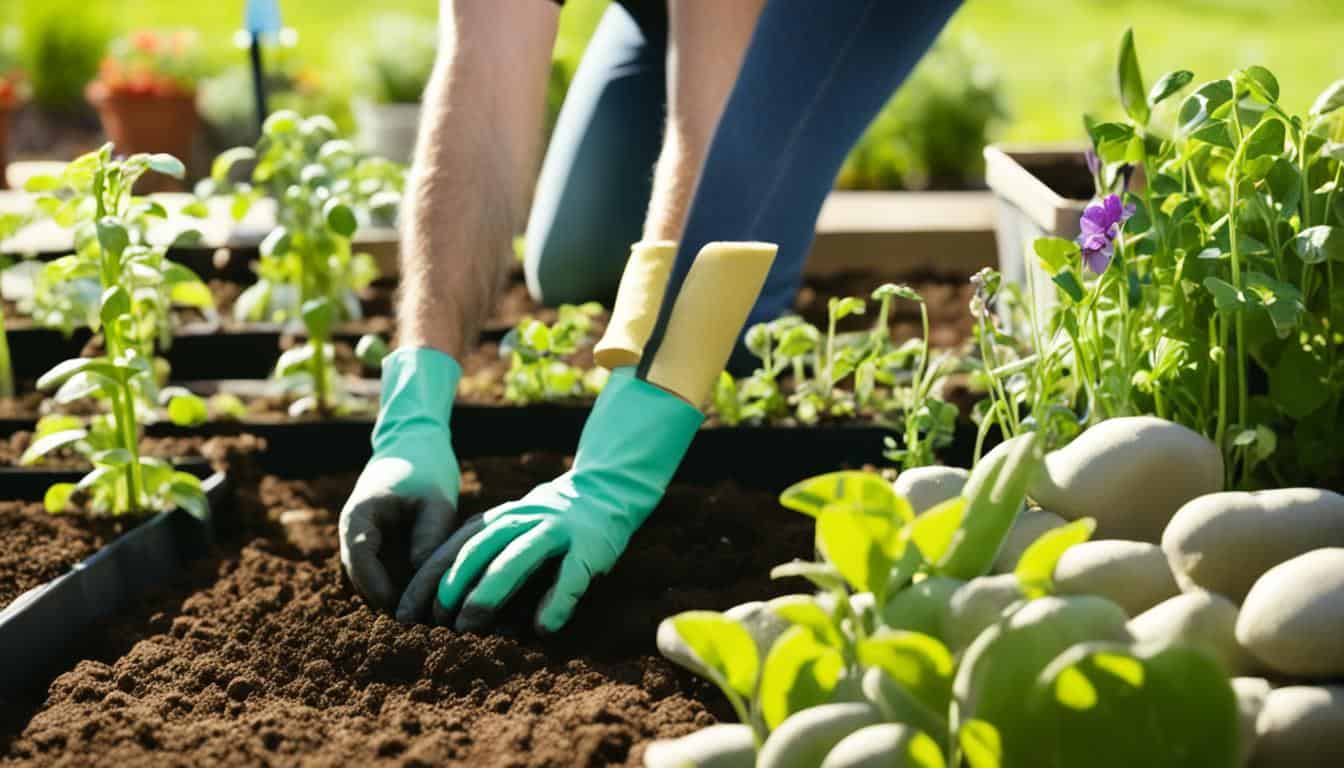
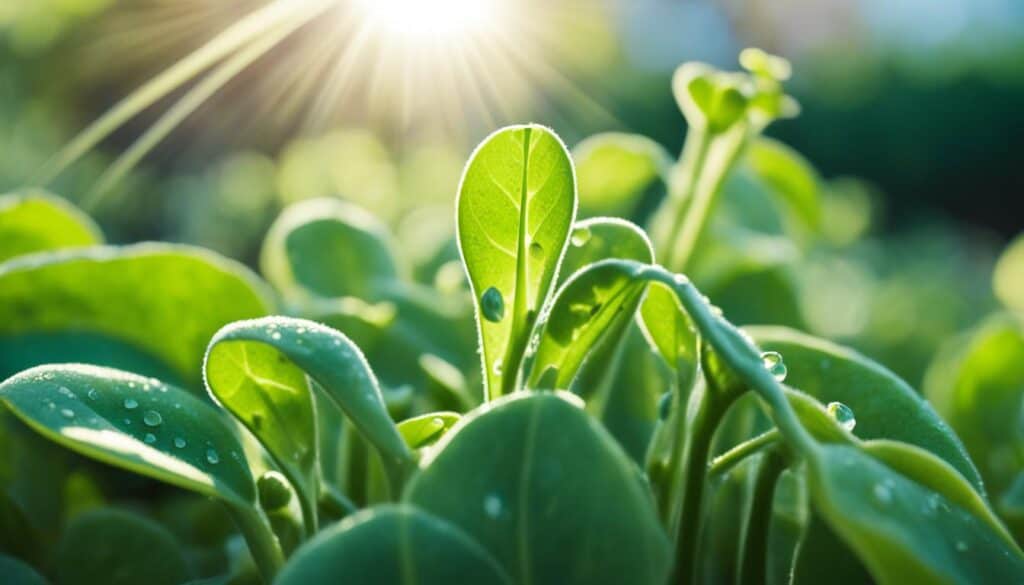
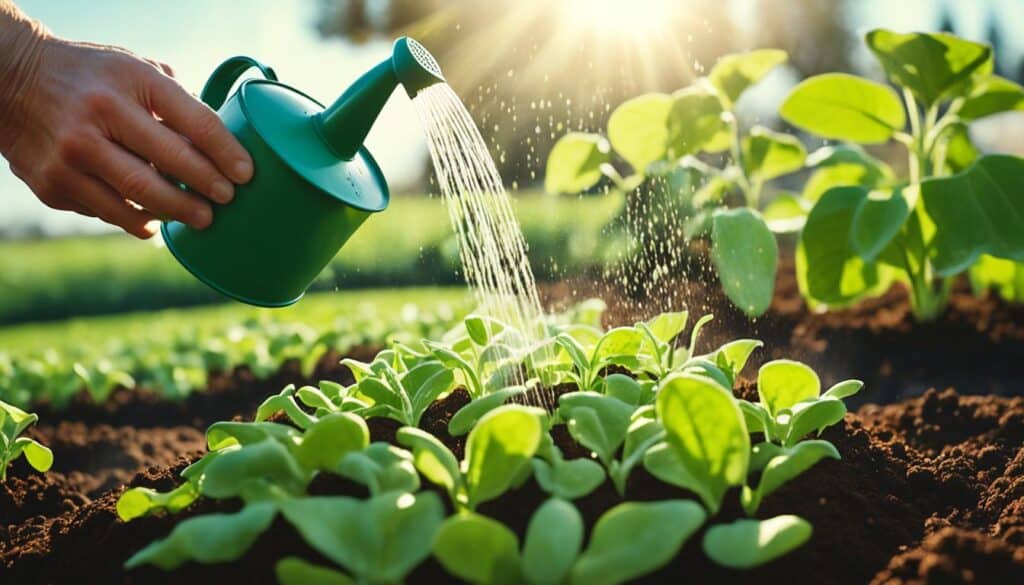
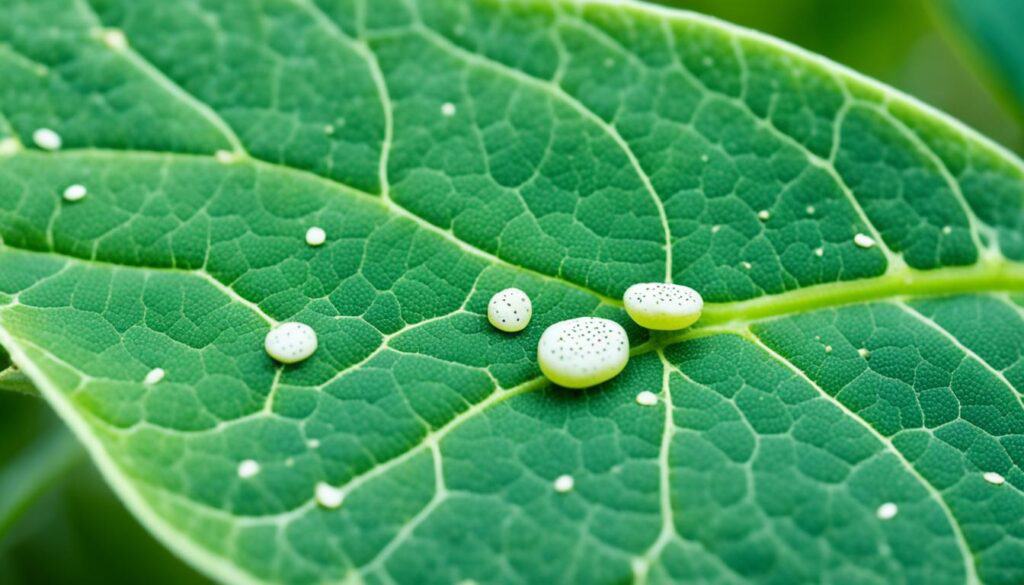
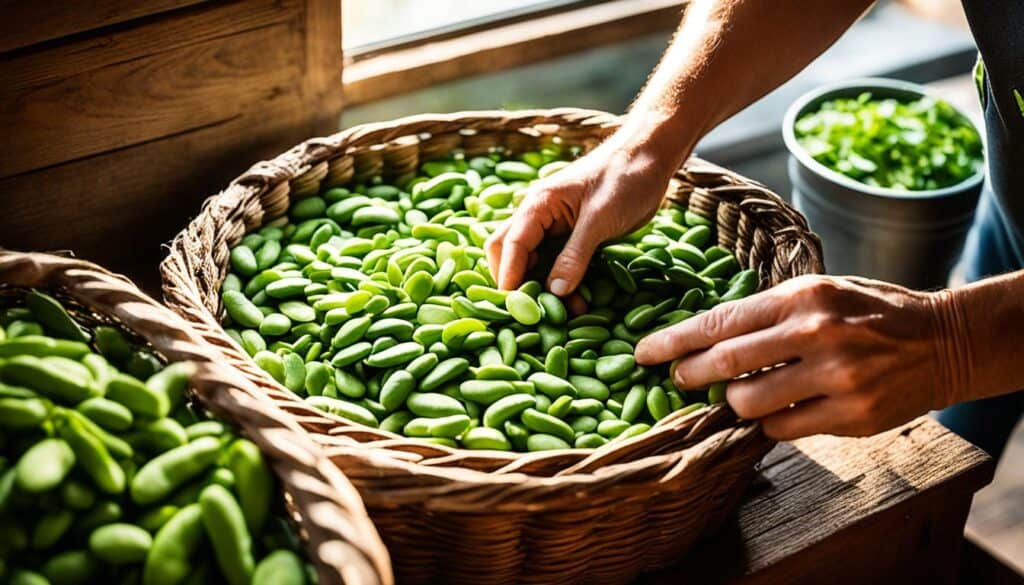
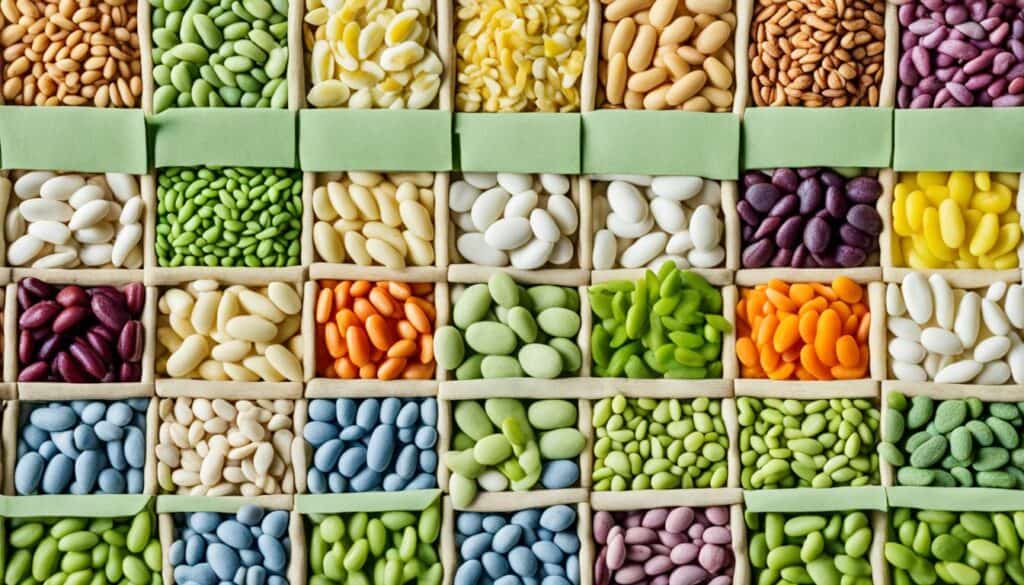



Leave a Reply